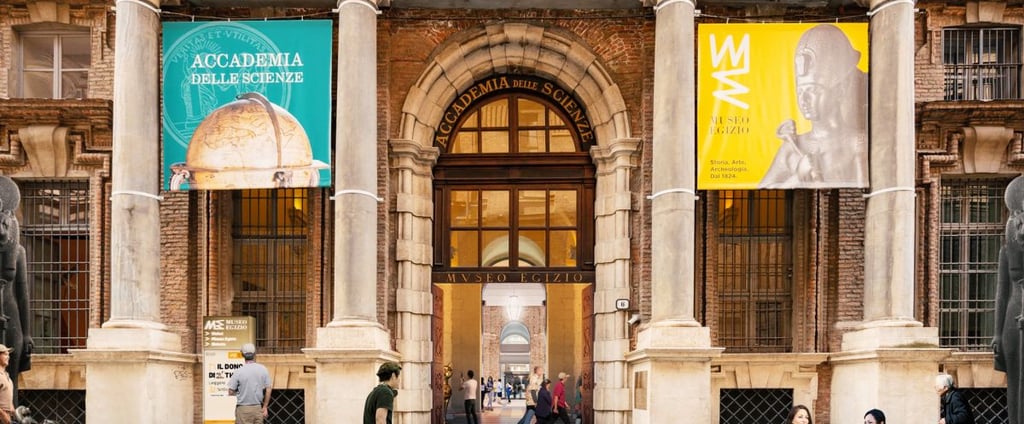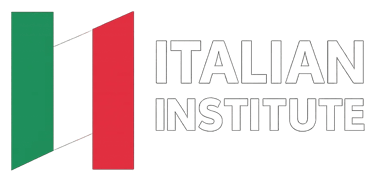Museo Egizio – Turin: The World's Oldest and Finest Museum for Egyptian Civilization
Step into a realm where pharaohs, papyri, and monumental statuary bring four millennia of Egyptian culture to life in Turin’s grand Baroque palace.
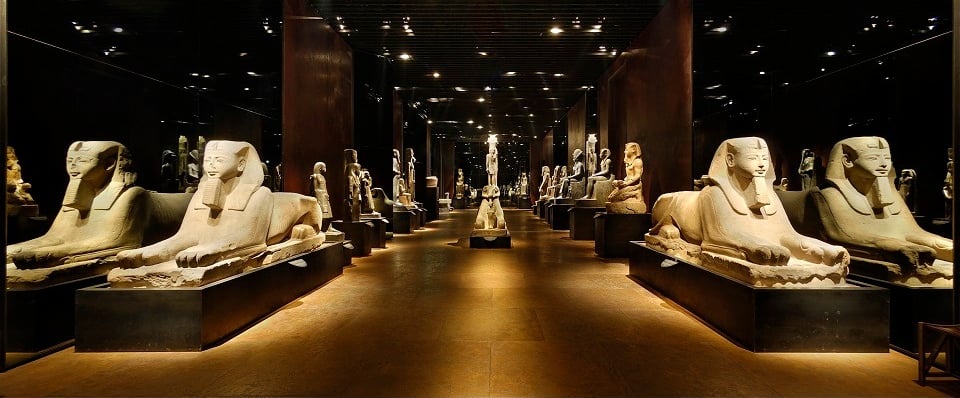

A Storied Introduction to the World’s Oldest Egyptian Museum
In the bustling city of Turin, nestled in a Baroque palazzo that once housed the Royal Savoy collections and the academy of science, stands a museum unlike any other in Europe. The Museo Egizio of Turin is not merely a repository of ancient artifacts; it is the oldest museum in the world devoted exclusively to Egyptian civilization. Founded in 1824, its inception marked a turning point in Western fascination with the Nile’s ancient culture. The institution emerged from a growing interest in Egyptology period, driven by royal patronage, archaeological zeal, and complex political currents spanning Europe and the Middle East.
When King Charles Felix of Sardinia acquired a vast collection of Egyptian antiquities in the early nineteenth century, he initiated a shift from scholarly curiosity to public heritage. Under the direction of eminent scholars and passionate curators, this embryonic collection grew into a world-class museum, inviting audiences to cross both temporal and cultural borders. Two centuries later, it stands today as a living chronicle of Egyptian art, religion, daily life, and death rituals, all woven into an architectural tapestry that merges Baroque grandeur with modern exhibition techniques.
Genesis: From Palaces to Papyri
The Museo Egizio finds its origins in the fervor of Napoleonic conquests and scientific expeditions that swept Europe at the end of the eighteenth century. Italian scholars, monks, and diplomats brought home stele, statues, and scrolls from Egypt, kindling curiosity among Turin’s intellectual circles. Yet it was the diplomatic envoy Bernardino Drovetti who catalyzed its transformation. Charged with gathering cultural treasures for the House of Savoy, Drovetti amassed a vast trove of objets d’art, including rare statues, inscribed stelae, and monumental fragments. These were later enriched by scholarly excavations and acquisitions, rapidly enlarging the nascent collection.
The palace that now hosts the Museo Egizio, formerly the Palazzo dell’Accademia delle Scienze, provided an ideal stage for displaying Egypt's ancient grandeur. Its lofty ceilings, ornate stucco work, and stepping staircases lent themselves to the drama of stately sarcophagi and towering obelisks. The opening of the museum to scholars and the public in 1824 redefined heritage: what had once been exclusive curiosities became part of a shared European cultural inheritance.
Practical Information for Visitors
The Museo Egizio is located in central Turin at Via Accademia delle Scienze, housed within the Palazzo dell’Accademia delle Scienze. It is easily accessed by tram and bus from Turin’s main station and civic center. The museum’s first floor welcomes every visitor into majestic halls, while subsequent floors reveal smaller and more specialized galleries.
Opening hours vary slightly depending on the day of the week and season, with standard hours spanning morning to early evening. The museum is often closed or open for shorter periods on national holidays, and occasional evening openings extend visitor access. Entry must currently be booked online in advance; walk-up tickets are not generally available. Admission fees are structured to promote access, with full fares, discounts for youth, seniors, and free access for certain age groups. The Torino+Piemonte Card offers inclusive year-round access when purchased.
Guided tours are available in multiple languages, and audio guides can be connected via personal devices through the museum’s Wi-Fi. Accessibility is comprehensive: ramps and lifts ensure wheelchair access to all levels. Families are welcome with tailored audio guides for children and tactile sections for hands-on learning. A cloakroom and restrooms with accessible stalls are provided.
On-site amenities include a museum bookshop specializing in Egyptological scholarship, educational toys, postcards, and replicas of select artifacts. A café adjacent to the entrance welcomes visitors with refreshments, locally sourced pastries, and a quiet space for contemplation. Quiet zones and park benches stand ready for rest and reflection, and free Wi-Fi encourages digital exploration.
The museum organizes regular workshops and summer academic schools where participants can learn excavation techniques, epigraphy, artifact preservation, and digital imaging. Visitors looking for deep engagement can register for seasonal internships or research residencies.
Visit the official website here: http://www.museoegizio.it
From Conservation to Science
Beyond display, the Museo Egizio is a hub of scientific study, cutting-edge conservation, and Egyptological research. Its laboratories preserve organic materials—papyrus, wood, leather, linen—using techniques that stabilize and reveal hidden texts through infrared and X-ray imaging. CT scanners unlock the internal structures of mummies and sarcophagi, while chemical analysis maps the pigments used in ancient painting. Each fragment and scroll is cataloged, digitized, and studied, ensuring that the museum is both custodian and investigator.
Researchers probe the museum’s extensive library and archive collections, filled with rare Arabic manuscripts, early travel accounts, and field notebooks from historic explorers. Ongoing joint ventures with international universities and archaeological missions deepen knowledge of ancient technologies, social networks, and climate shifts. Through virtual reconstructions and digital annotation, the museum transcends its walls to make its collection digitally available to a global public.
Engaging Audiences Across Time and Cultures
The Museo Egizio has emerged as a cultural beacon dedicated to cultivating cross-cultural awareness. It pioneers multilingual engagement, offering tours in Arabic that connect Egyptian residents and refugees living in Italy with their ancestral heritage. In collaboration with regional schools and minority associations, the museum fosters dialogue about migration, identity, and shared history.
Interactive installations allow visitors to engage with translation tools, hieroglyphic writing desks, scent stations, and light-projection narratives. Children learn to write their names in hieroglyphs while adults explore what it means to preserve cultural heritage. Special community-access programs open the museum's doors to those facing economic or social barriers, further cementing the institution’s role as a shared civic space.
Exhibitions That Transcend Time
The museum regularly hosts temporary exhibitions that bridge ancient and modern contexts. Past shows have explored the iconography of coffins and burial art, the role of women in ancient Egypt, and parallel religious symbols found across Mediterranean civilizations. Each exhibit is curated to engage a contemporary audience with resonances that matter today—from ritual, gender, and power, to environmental transition and labor practices.
Themed seasons and traveling exhibitions often focus on underrepresented aspects of Egyptian culture. For instance, thematic displays might examine artisans’ craftsmanship in everyday objects, the medical knowledge encoded in shabti figures, or musical instruments found in tombs. These initiatives reinforce that ancient Egyptians were not monolithic but dynamic people with diverse identities, interests, and relationships.
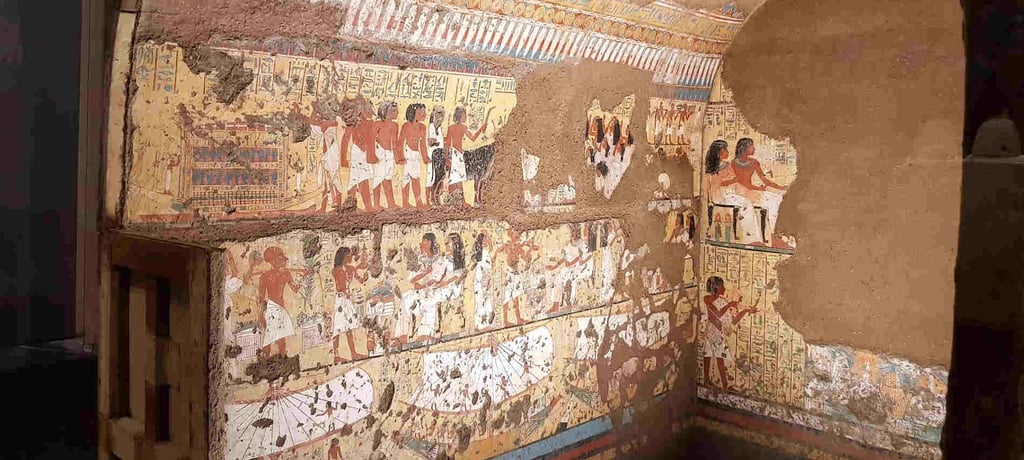

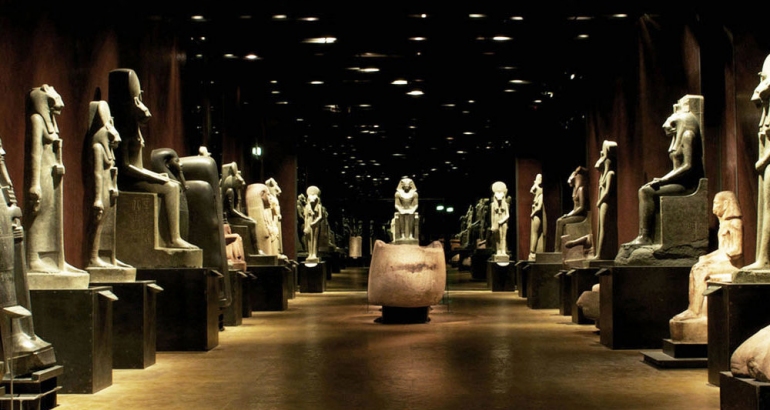

A Repository Beyond Compare
The power of the Museo Egizio lies in its collection's scale and depth. It offers a comprehensive view of ancient Egyptian life, spanning the prehistoric era to the Coptic period. Visitors walk among vast stone statues of deities like Sekhmet and Ramesses II, intricate funerary masks crafted out of cartonnage, glazed canopic jars holding the viscera of the dead, and perfectly preserved papyri that bear witness to spells, maps, poetry, and daily transactions. Each item is a portal into another world—where afterlives were as vibrant as earthly experiences, where gods walked alongside pharaohs, and where each hieroglyphic sign told a story.
Central to the collection is the intact funeral kit of the architect Kha and his wife Merit, discovered in Deir el-Medina in 1906. This unparalleled find captures an entire life: wooden furniture, clothing, jewelry, and a scroll of the Book of the Dead. Visitors are offered a rare opportunity to step inside the ritual preparations of a royal craftsman who lived nearly four millennia ago.
Another centerpiece is the Turin Papyrus Map, considered the oldest known topographic map, illustrating an Egyptian mine field and the surrounding terrain. It demonstrates the level of sophistication that ancient Egyptians applied to management, engineering, and cartography.
Not to be overlooked is the "Erotic Turin Papyrus", a frank and finely drawn scroll dating to approximately 1150 BCE—which provides a rare and surprisingly earthy glimpse of humor and intimacy in Egypt’s New Kingdom courtly life.
Architectural and Curatorial Dialogue
Over nearly two centuries, the Museo Egizio has evolved from a scholarly treasure trove to an immersive storytelling environment. Its Baroque rooms, with frescoed ceilings and carved cornices, provide a majestic context in which monumental sculptures and royal effigies are juxtaposed with elegantly lit display cases and immersive installations. In the late 20th century, repairs and restoration work carefully expanded the exhibition space while preserving the historic ambience. Galleries have been reconfigured to guide visitors through chronological narrative, thematic threads, or material techniques—linking funerary practices with social structure, art with ideology, and science with spirituality.
The museum’s hallmark galleries—such as the Gallery of the Kings—have been transformed into atmospheric spaces evocative of ancient temples. Soft lighting draws out the carved expressions on statues of dynastic pharaohs, while reflective panels give life to their silent gazes. These environments are not static; they are designed to resemble immersive tableaux in which visitor presence activates the echoes of ritual and power.
